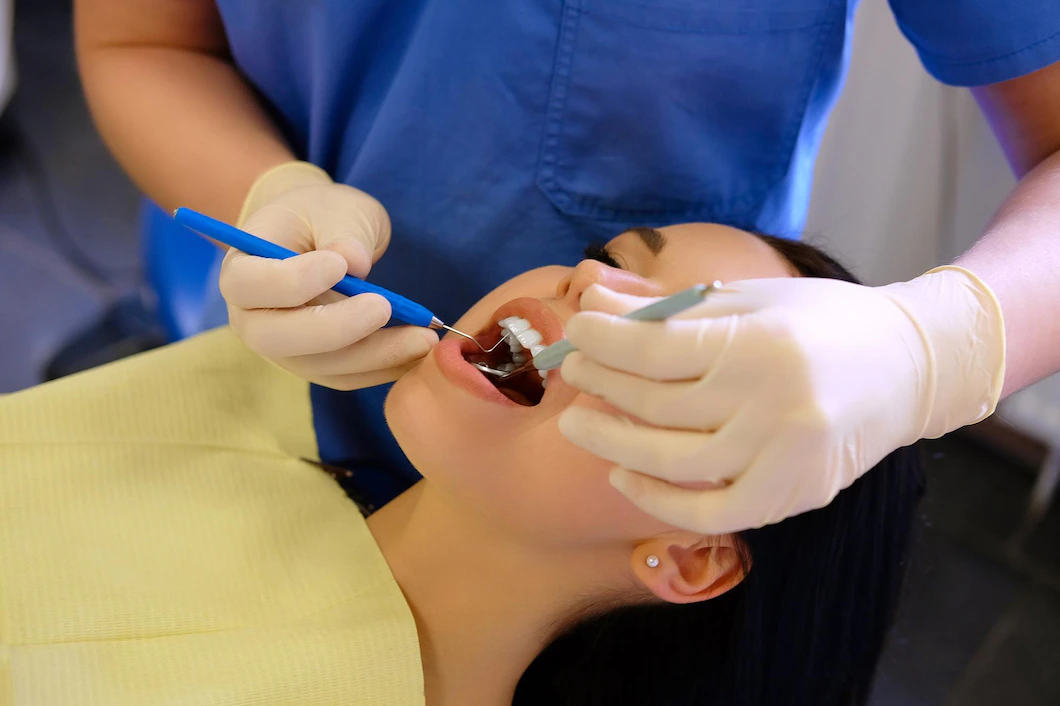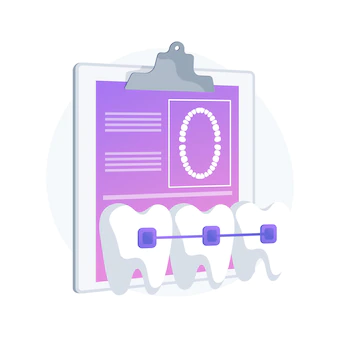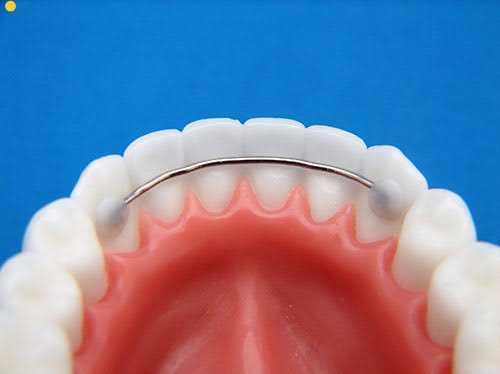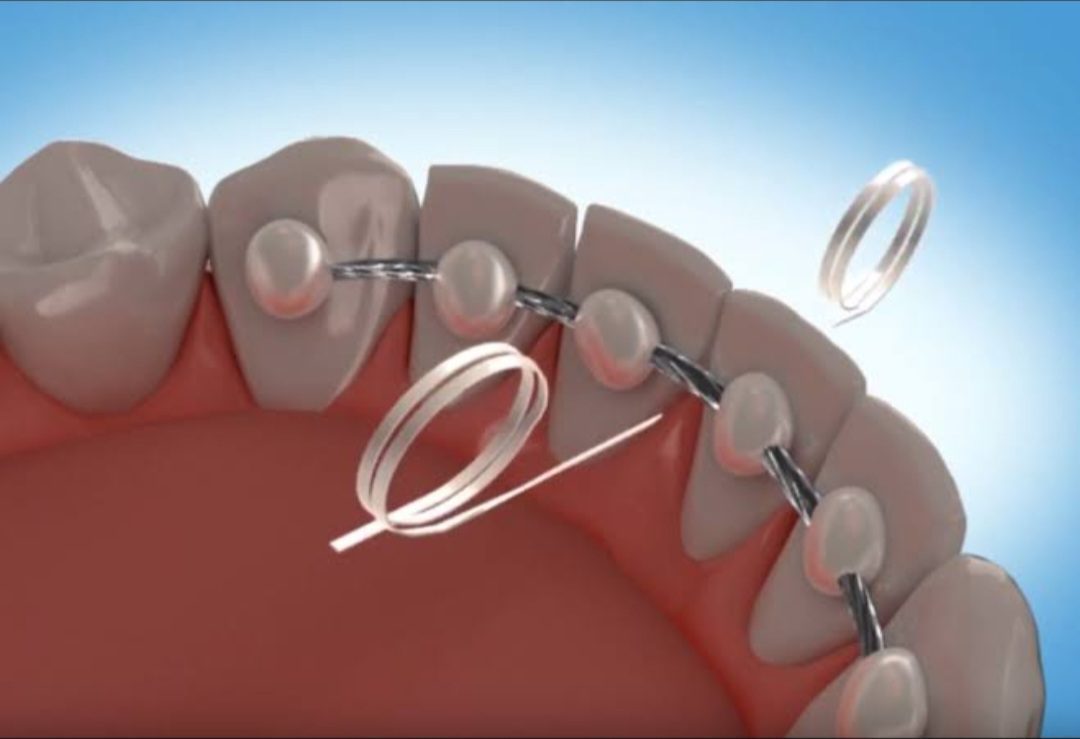Keep your smile on their Place: The Benefits & Care of Permanent Retainers…
Hello dear friends,
ForajCreation Welcomes you to the unique & trustworthy health blogging website that provides exceptional value to your overall well-being and helps in achieving your goal’s also.
This discussion will cover valuable information on making your smile Better with permanent retainers and care of permanent retainers.
☆ Just Seat back! Relax & be Ready For Valuable Insights From This Post.
☆ Hey, Do you ever wish to straight and perfect smile forever?
☆ Worried about it?
= Rest assured! This article will help you with comprehensive answers to all your questions and queries regarding permanent retainers, With some additional tips.
Let’s get started…

》Engaging Introduction:-
If you see someone who has undergone orthodontic treatment, then you may have heard of permanent retainers.
These are thin metal wires that are joint with the back of the teeth to maintain the new position of the teeth after braces are removed.
The permanent retainers are generally used to prevent your teeth from moving back to their original place after orthodontic treatment.
– Orthodontic is the practice of straightening misaligned teeth.
There are mainly two types of retainers available in the market, permanent and regular.
Removable retainers can wear and remhem whenever they choose and permanent retainers can be worn for up to 20 years.
In some cases, orthodontists can recommend wearing both permanent and removable retainers.
In recent studies, permanent retainers are becoming more popular.
Removable retainers are used for top teeth and permanent retainers are used for lower teeth.
In this article, we will cover everything you need to know about permanent retainers, including how they work, the benefits and drawbacks of having them and how to take care of them.
☆ Interesting Facts
– Retainers can be designed according to your mouth or it has custom designed.
– The first permanent retainer were introduced in 1970 and it was made of stainless steel wire.
– Today, permanent retainer can be made with various metals, including gold and titanium.
– The American Association of Orthodontists, about 20% of orthodontic patients are fitted with permanent retainers after their braces are removed.
– A study revealed that patients with permanent retainers were less likely to experience relapse than those with removable retainers.
– Study shows that permanent retainer significantly have less plaque buildup on their teeth than those with removable retainers.
These all are the statistics, that highlight the popularity and effectiveness of permanent retainer with orthodontic treatment results.

》Define Retainers & Their Types…
Definition:- “Retainers are the appliances that help us to keep the teeth in their new positions after braces or other orthodontic teeth”
Retainers are mainly made of any flexible material, Ductile and enough strong to fit and stay inside.
There are many materials which are used as MOC – Materials for the construction of permanent retainers including, Stainless steel, gold, titanium, copper, nickel etc…
There are mainly Two types of retainers first one is removable and another one is permanent or non-removable.
• Removable retainers.
These are typically made of clear plastic or acrylic materials and can be customized for perfect fitting over the teeth.
They can be easily removed and replaced by the patient at home, allowing them easy cleaning and maintenance.
It is worn for a few months or up to a year after braces are removed and then only at night.
• Permanent retainers.
Permanent retainers are also known as bonded or fixed retainers which are thin wires that are attached to the back of the teeth using a dental special adhesive.
It is mostly used for front lower teeth which are more prone to shifting after orthodontic treatment.
Unlike removable retainers, permanent retainer can’t be removed by patients at home and require special maintenance.
》Working principles of permanent retainers.
Permanent retainers work on the principle of providing continuous pressure to the teeth to keep them in their proper position after orthodontic treatment.
The permanent retainer are designed to stick behind the teeth permanently and bonded back to the teeth using any specific adhesive.
This adhesive ensures that teeth do not shift back to their previous position.
The wire used in the permanent retainer is typically made of stainless steel or nickel-titanium, which are both strong and durable materials.
The pressure provided by the permanent retainer is gentle and continuous, which helps to prevent any unwanted movement of the teeth.
This is important because the teeth are continuously under pressure from the surrounding, muscles, tongue and lips which can cause them to shift out of place over time.

》Process of Fitting permanent retainers
Getting a permanent retainer involves several steps that require the attention of a dental professional.
Here, We have outlined the general guidelines on fitting permanent retainers for better understanding.
• Step No. 1 – Consultation
The first step in getting a permanent retainer is to fix schedule a Consultation with your dentist or Orthodontist.
During this appointment, they will examine your teeth, review your dental history and recommend the best types of retainers that are suitable for your teeth.
• Step No. 2 – Impressions
After deciding on permanent retainer, They will take an impression of retainers to create a custom-fit retainer.
This involves placing a dental putty-like substance in your mouth to create a mould of your teeth.
• Step No. 3 – Bonding
After the impression, your dental experts will bond the retainers to the back of your teeth with special dental adhesive or dental cement.
This process typically takes an hour to complete.
• Step No. 4 – Instruction on care.
After completing the bonding procedure your dental experts will provide genuine information to care after bonding.
It may include certain foods, maintaining proper oral hygiene and attending follow-up sessions.
• Step No. 5 – Follow-up appointment
It is important to attend Follow-up appointments to ensure that your retainers are functioning correctly and to address any issues that may arise.
In this step dental expert will check the present condition of retainers, adjust if needed and monitor health alignment.
By following these steps, you can ensure that your permanent retainer are properly installed and maintained.
》Cost of permanent retainers.
The expenditures or cost of permanent retainers can vary Which is dependent on multiple factors just as the location of the
Orthodontist and complexity of the treatment.
The average cost of permanent retainers can range from 12000 to 34000 Indian rupees.
However, these cost does not include some additional fees and medication needed.
To get an accurate estimate of the cost of permanent retainers, it is recommended to schedule a Consultation with an Orthodontist.
Additionally, many Orthodontic offices offer payment plans and financial offers to help make the cost of treatment more manageable for patients.
Note that investing in a permanent retainer can ultimately save money.
》Care of Permanent Retainers
Taking proper care of Permanent retainers is a crucial step to ensure their longevity and effectiveness in keeping your teeth in their proper positions.
Here are some step-by-step guides on caring for your permanent retainers.
1. Brush regularly:-
Unlike teeth, your permanent retainers take proper cleaning and maintenance to ensure their longevity.
Keep your permanent retainers clean and prevent any plaque buildup by using the daily toothbrush.
Use a soft-bristled toothbrush and non-abrasive toothpaste to gently clean your retainers.
2. Floss daily:-
Flossing is very important to remove any food particles that may get stuck there.
Use a floss threader or interdental brushes to clean between the wire and your teeth.

3. Avoid hard, sticky or chewy foods:-
Eating hard and sticky food can easily damage your permanent retainers or cause them to come loose.
Stick to softer foods that won’t put too much pressure on your teeth or retainers.
4. Visit your Orthodontist:-
A regular check-up with your Orthodontist can help to detect any issues with your permanent retainers earlier to keep your teeth in the correct position.
5. Wear a mouthguard during sports:-
If you daily active player in sports then you must have to wear a mouthguard that may help to protect your teeth and retainers from any potential damage.
6. Use water flossers:
If you find it difficult to floss then you may use a water flosser device to floss it properly.
By following these steps you can ensure that your permanent retainers stay in good condition and continue to do their job by keeping your teeth in the proper position.
》How long do permanent retainers last?
Permanent retainers can last for several years but The lifespan of permanent retainers depends on factors such as oral hygiene, diet and regular dental checkup.
With proper care and maintenance, permanent retainers can last for up to 10 years or even longer.
However, it’s important to note that permanent retainers can still break or lose over time, especially if not properly cared for it.
If you noticed any issues with your permanent retainers, it’s best to consult with your Orthodontist for proper maintenance and replacement.
》Pros and cons of permanent retainers
Permanent retainers have become a popular choice for people who want to maintain their teeth straight after completing orthodontic treatment.
However, like any dental treatment, there are both advantages and disadvantages to getting a permanent retainer.
Let’s see…
☆ Advantages of the permanent retainers are:
– It requires low maintenance:
Unlike removable retainers, permanent retainers require minimal upkeep.
You won’t need to worry about misplacing them or cleaning them.
– Very convenient:
Once you installed your permanent retainers in place, you’ll barely notice it’s there.
It won’t interfere with your speech, and you won’t have to adjust it throughout the day.
– Nobody knows about their placing in your mouth.
It is because it’s bonded just behind your teeth, so don’t worry if you feel shy.
– You don’t need proper attention to them to wear and remove.
– it’s the one-time solution for your misaligned teeth as it can last for several years.
☆ Disadvantages of permanent retainers are:
– Cost:- The permanent retainers can be more expensive than a removable retainer as they require more time and expertise to install with proper future guidance.
– Potential for damage: Although rare but permanent retainers can break or come loose, and requires an emergency dental visit.
– Difficult to clean from inside:
Just because permanent retainers are fixed in place, they can be difficult to clean properly.
Food particles and plaque can easily build up around the wire, leading to cavities and other dental issues.
– Discomfort: It may feel discomfort while a person’s tongue brushes against the wire.
– Tongue can be hurt: At first, Your tongue naturally attempts to touch the metal object inside your mouth, causing discomfort.
Therefore, it requires changing your mindset and habit to prevent your tongue from touching the wire and avoid potential injuries or pain.
》Common Myths or Misconceptions about permanent retainers.
Permanent retainers are a very popular and great choice for people.
However, there are several myths and misconceptions surrounding permanent retainers that need to be addressed.
• Myth No.1:- It is uncomfortable & painful.
– Fact No.1:- Many people reported that permanent retainers are comfortable and do not cause any pain or discomfort.
Once they become used to the retainers, they may not even notice that it’s there.
• Myth No. 2:- Requires more maintenance.
– Facts No.2:- Permanent retainers only require perfect and regular brushing and flossing to prevent plaque buildup.
They do not need to be removed and cleaned like removable retainers.
Therefore, some people may find them to be more convenient.
• Myths No.3:- It can cause tooth decay.
– Facts No.3:- It is true but with proper brushing and flossing and with proper maintenance of it, the risk of tooth decay can be significantly reduced.
• Myth No.4:- It is more expensive than removable retainers.
– Facts No.4:- Well, The cost of permanent retainers varies depending on the location and the Orthodontist, they are generally comparable in price to removable retainers
• Myth No.5:- It is not effective as a removable retainer.
– Facts No.5:- Permanent retainers are just as effective as removable retainers in preventing teeth from shifting.
Some people may find them to be more effective since they are always in place and cannot be forgotten or misplaced.
By understanding these all myths and truths an individual can make informed decisions about their dental health.
》What if it gets damaged?
Well, it becomes in rare cases because it is strong and inside your mouth but still if your permanent retainers are damaged then you should follow immediate action givgivenlow.
Here is a step-by-step guide on what to do if your permanent retainers get damaged.
1. Checked the damage:-
Examine your permanent retainer closely to determine the extent of the damage.
If the wire is bent, Broken or loose, you may need to have it repaired or replaced.
2. Immediate contact your Orthodontist:
Get in touch with your Orthodontist as soon as possible to schedule an appointment.
Explain how it breaks and what to do after this.
3. Just follow the instructions:
Your Orthodontist will provide you with specific instructions on what to do next.
They may ask you to come in for an appointment or provide you with advice on how to fix this issue temporarily until your appointment is fixed.
4. Avoid further damage:
Until your appointment, try to avoid eating hard, sticky or crunchy foods that could further damage your retainers.
Also, keep your teeth and gums clean to prevent any additional problems.
5. Attend your appointment:
When you attend your appointment, your Orthodontist will examine and determine the best course of action.
Depending on the severity of the damage, they may be able to repair the retainers on the spot or may need to replace them entirely.
6. Follow up:
After your appointment, your Orthodontist may recommend a follow-up procedure or appointment or provide the best additional care information.
It is important to follow these instructions to ensure your retainers function properly and your teeth stay in place.
By following the above steps you can ensure that your damage will be addressed promptly and effectively to maintain a healthy smile.
》Summary:-
Permanent retainers are orthodontic devices that are glued back to the back of your teeth to maintain their alignment after braces and removed.
The process of getting permanent retainers involves bonding them to the teeth with a special adhesive.
They are mostly used and liked by many peoples after any orthodontic treatment.
However, they have pros and cons which are mentioned above.
Regular cleaning and flossing are required to take proper care of your permanent retainer.
Patients with permanent retainers should not eat any hard and sticky food that can cause damage to the permanent retainer.
Subscribe to our blog post for further updates and the latest blog posts related to your Physical health, Mental health and Personal development.
We hope that you are deriving numerous benefits from our blog.
Be healthy!
Be happy!
Thank you…
Visit again…
••••••••••••••》ForajCreation《••••••••••••••••